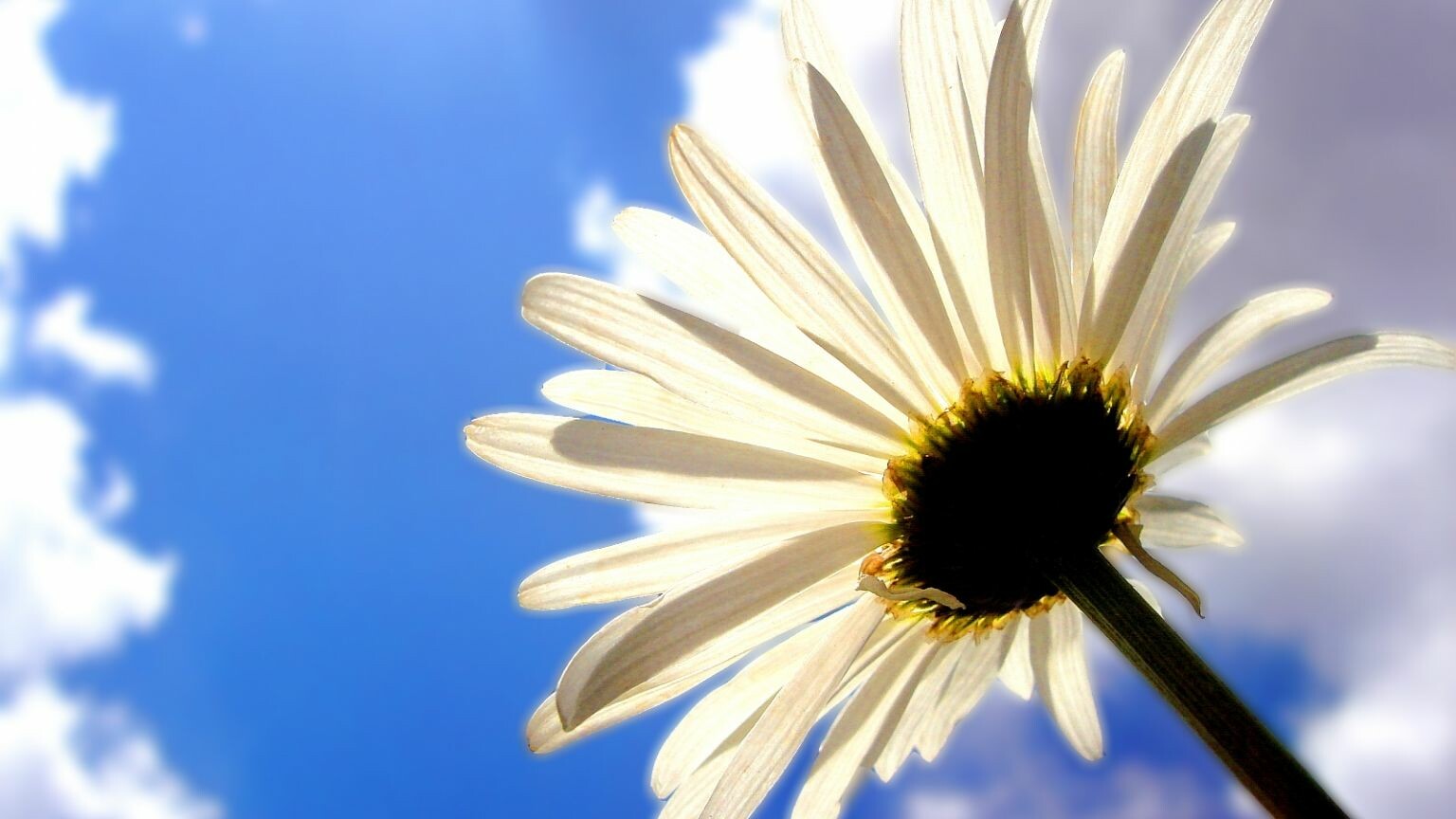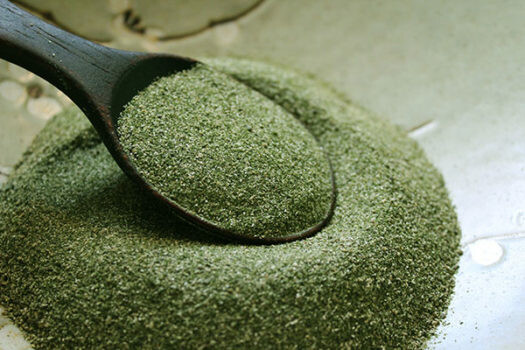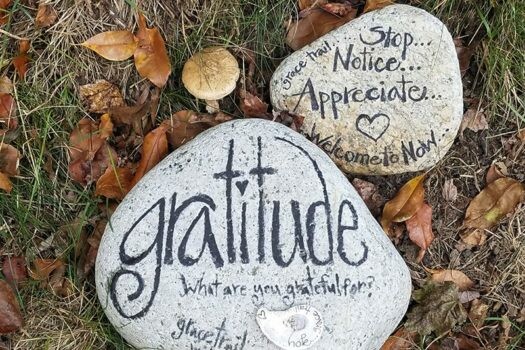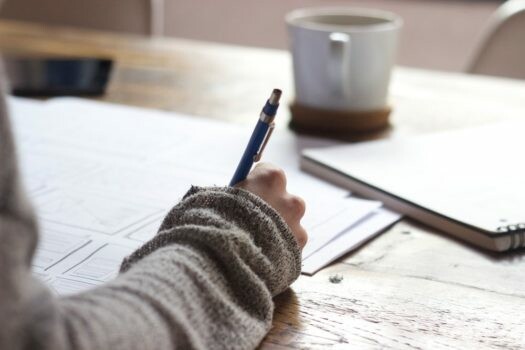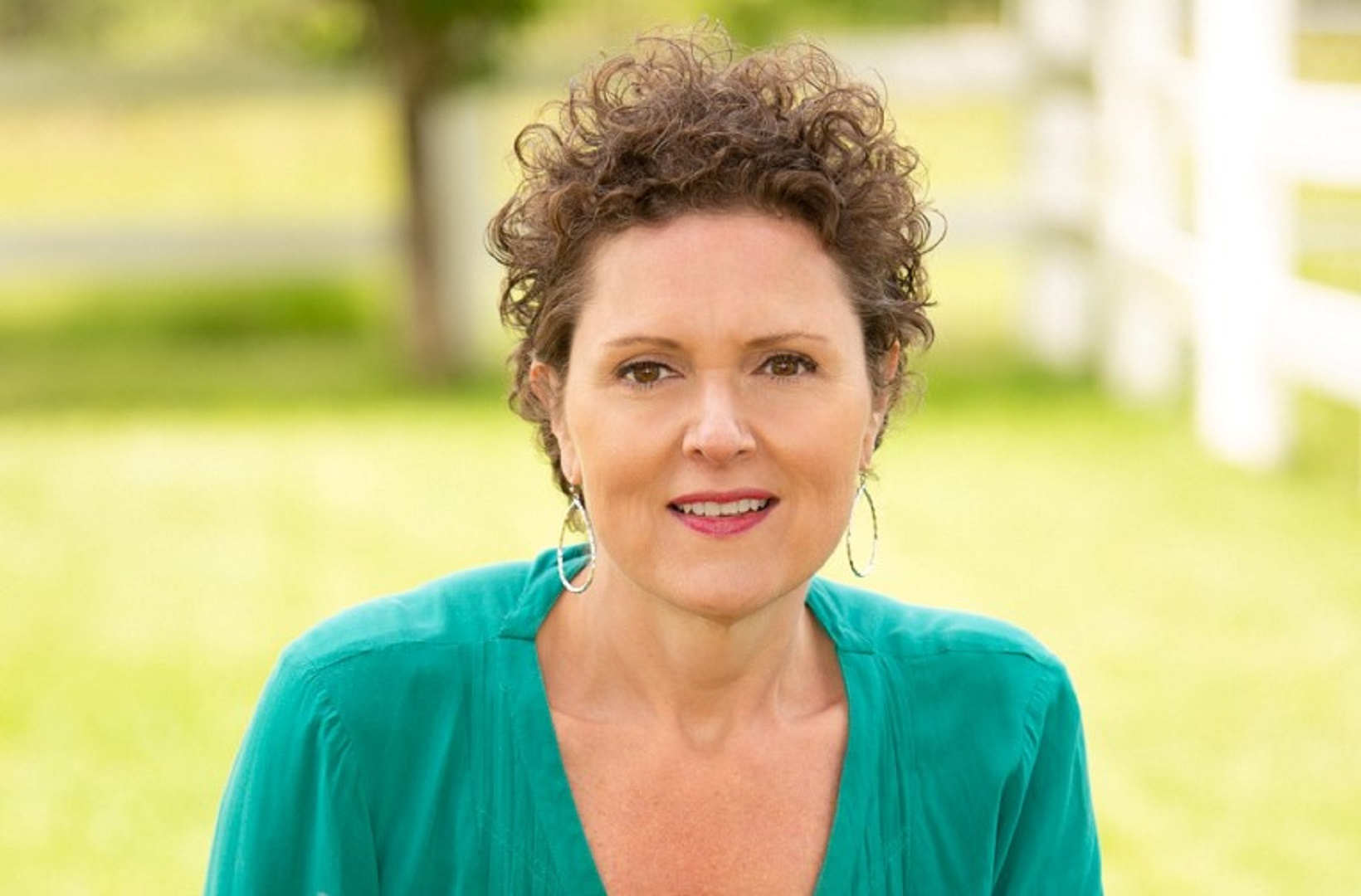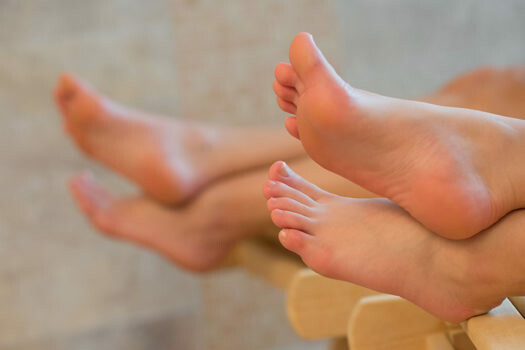
Who doesn’t love a foot rub!!! I readily admit that I love having my tootsies rubbed. Foot Reflexology is an ancient method of therapy that has some great health benefits.
The technique consists of firmly rubbing the feet and/or hands in particular ways. Pressure is applied to the feet and hands using specific thumb, finger and hand techniques, tools or instruments such as a wooden foot roller. It’s easy to learn, and you can do it almost anywhere.
By applying pressure to “reflex” points on the hands and feet, you can help to stimulate the body’s natural powers of self-healing. Massaging the feet where it hurts can assist in loosening and flushing out toxins from the lymph system and organs. Even though it’s a little different than just a regular foot massage and can hurt a little at times, I still love it. When there is a spot that is tender I always think about how rubbing and applying pressure to that spot is helping another part of my body heal and work better.
Another name for reflexology might also be correspondence therapy, meaning that one part of the body corresponds to another part of the body. On each foot there are over 7,000 nerve endings called reflexes that correspond to every organ and system within your body. By pressing on these reflex points, you stimulate the nervous system and open energy pathways that may be blocked or congested.
The reflex channels are a system of tiny tubes or energy channels that run vertically down the front, up the back of the body, and along the entire length of the body according to the theory of reflexology. Interestingly, each part of your foot and hand – top, bottom and sides – corresponds or connects to a particular organ, gland or area of the body.
For example, the large toe, and all of the toes to some degree, correspond or reflex to the head. The arch of the foot reflexes or corresponds to the spine. The middle of the foot corresponds to the trunk and internal organs. As you rub various areas of the feet or hands, sometimes you can feel bits of hard sand-like crystals. This is a kind of sediment that builds up in the channels. When it is removed by rubbing properly, the channel opens or empties and energy flows to the organ or gland that the channel is connected to. It is a very complex system, but simple to work with.
The Top ten benefits of reflexology
- Helps reduce stress and tension – creating relaxation
- Improves circulation and blood flow throughout the body
- Aids in the removal of toxins
- Helps the body maintain a natural state of homeostasis
- Encourages the immune system to work at it optimum level
- Helps rejuvenate the system and increase energy levels
- Break up the blockages affecting the flow of energy throughout the body
- Relieves common aches and pains
- Contributes to the overall well-being of the body, mind, and soul
- Promotes healthy organ function
When To Use Reflexology
Reflexology is excellent for all acute conditions such as infections, accidents and injuries, toothaches, back pain, constipation, arthritis even high blood pressure and much more. Several studies funded by the National Cancer Institute and the National Institutes of Health indicate that reflexology may reduce pain and psychological symptoms, such as anxiety and depression, and enhance relaxation and sleep. Studies also show that reflexology may have benefits in palliative care of people with cancer.
Digestion issues are the most common issue treated with reflexology. Foot reflexology can bring balance when constipation is an issue. Stimulation of the intestine, colon and other corresponding reflexes can make elimination easier. It can help remove toxins and infections from the body, and it can even help open certain channels of energy that can permanently improve one’s health status and promote what Dr. Wilson calls mental or spiritual development.
It can be very beneficial for liver activity. There are three main reflex areas on the feet and hands for the liver. One is on the bottom of the feet, behind the third and fourth toes in the soft part of the bottom of the feet, near the ball of the foot. Another is on the top of the foot, in the web between the big toe and the second toe. This area is often extremely painful to rub. A third area is behind the little toe along the side of the foot. It is related more to the shoulder, but this is often an area where liver meridian energy is stuck.
Reflexology may also help in emergencies. It may even save a life if used during a heart attack, a stroke, shock or a hemorrhage.
Who Can Benefit From Reflexology?
Almost anyone can benefit from reflexology. It’s a wonderful method for parents to help their children’s health in a safe, easy and enjoyable manner. Touch has been proven to have a powerful impact on a growing child’s health. Reflexology focuses that touch on stressors in the hands and feet, providing caring interaction and a natural solution for health concerns.
Children usually love having their feet rubbed and respond well to it. It can be used for many problems in children such as stomach aches, headaches, trouble falling asleep (it is fabulous for insomnia), sore throats, colds, other infections, asthma attacks, bruises, other aches and pains, and more. You can also teach your children to do it on themselves, and maybe they will trade with you and give you a session, as well. Children can also benefit from reflexology in unique ways because the technique may open them to some deeper healing and mental development.
It’s often an excellent way to connect with teenagers, as well. It can be used just for relaxation and stress release, or for therapy as described above with children.
Adults of all ages can respond beautifully to reflexology. Once again, it is a non-invasive and safe way to connect with elderly adults. When rubbing older people, use less pressure, and perhaps do shorter treatments. Use extra care because the skin is usually thinner and more delicate, and the veins are usually weaker and can be broken more easily.
How To Get Started
To represent how the body systems correspond to one another, reflexology maps or charts are used. A good example of a reflexology map exists for the feet. Each foot represents a vertical half of the body:
- The left foot corresponds to the left side of the body and all organs, valves, etc. found there.
- The right foot corresponds to the right side of the body, and all organs found there. For example, the liver is on the right side of the body, and, therefore, the corresponding reflex area is on the right foot.
Foot rollers and massage balls can also be very helpful. These are not necessary, but some people like to use foot rollers and other simple wooden or plastic devices to rub the feet and hands in particular ways. Try putting a wooden spindle roller under your desk at work, use a golf ball on your hands while waiting for the kids at school or do either while watching TV.
Rub quite firmly, enough to cause some discomfort…but not too much!! You can decide to rub the entire foot or hand or just do spot therapy. Spot therapy is rubbing areas that you feel need attention, and perhaps use the technique to relieve symptoms.
Chronic conditions will require multiple sessions in most case, and requires both general sessions and spot therapy in many cases. Spot therapy is excellent as a remedy for headaches, back aches, infections, and other symptoms such as an upset stomach or even an emotional upset. Sessions usually don’t need to be any longer than 10 to 20 minutes per foot. At times, a longer session is helpful while at times, a shorter session is adequate.
Depending upon where you live, you may also find a professional who does foot reflexology in your area.
A few helpful hints
- You can find hurts that you did not even realize were there.
- If possible, always follow your spot treatment with a quick general foot or hand rub. This can help balance the entire body and therefore help relieve symptoms and tone the body.
- During a session, you should find some painful areas, and perhaps some areas that are quite tender. If you are not feeling any of these, you may be rubbing too gently. Try increasing the pressure a little bit. This is where a foot roller may come in handy as some don’t have enough strength in their fingers to do a good job.
- Be careful not to rub too hard. Some people rub too lightly, but others definitely rub too hard. It should hurt a little, but not be unbearable. Rubbing too hard can tear blood vessels, especially in older people and in babies. Be careful not to do this, as you will then not be able to do a reflexology treatment until your hand or foot heals. Short movements are sometimes better than longer, deeper movements for this reason.
- In most cases, rub the reflex area you are interested in on both feet, even if the chart shows the problem area to be just on one hand or one foot. This may enhance your results.
- When rubbing the top of a foot or a hand, be much gentler. The blood vessels in this area are far more delicate. Use some oil, if needed, to make rubbing smoother. Reflexology doesn’t use much gliding, sliding, or rubbing: therefore an oil or lotion is not necessary, it is simply supplementary. A pinch of product before the session may help with movement if the feet are excessively dry. If you choose to do this, it is recommended that you apply this to your hands, rather than the area to be worked.
- Reflexology is actually very powerful, so do not overdo a spot treatment. Usually, ten to twenty minutes is enough. In a few cases, more time may be needed.
- Reflexology can remove some toxic substances from the body very quickly. If these are not released fast enough, or if it is overdone, one can experience some mild toxic effect that usually disappears quickly. These typically include some nausea, light-headedness, dizziness or a general feeling of discomfort or illness throughout the body. Don’t panic if this happens. These symptoms are not usually worrisome but are not helpful.
- Since most reactions are caused by the sudden release of toxins or waste products into the system, they can be avoided by working the kidney area thoroughly on each foot during the first several treatments.
- The solid organs of the body include the liver, kidneys, brain, spleen, pancreas, and all of the glands such as the thyroid, adrenals, ovaries, testis, pituitary and pineal glands. The hollow organs are the lungs, stomach, large and small intestines, heart, urinary bladder and gallbladder. When doing reflexology, you may find that the solid organs can take a little more pressure than the hollow organs. For this reason, you may need to apply less pressure and be gentler when working on the hollow organs such as the lungs and bronchial tubes. This may help to fine-tune your treatments for the greatest effectiveness.
I encourage you to get started rubbing your feet today or better yet trade off with someone. Help improve your spouse’s, children’s, or your friend’s health today by rubbing their feet. I suggest you grab a foot and start rubbing!
Sources
- What is reflexology?
- Reflexology for Children by Barbara Kunz
- Reflexology benefits
Disclaimer: The information contained herein is not to be construed as medical advice and is not intended to diagnose, treat, or cure any medical condition. These statements made have not been approved by the FDA, nor should they be taken as a substitute for medical advice from a licensed physician.
Affiliate Links: Some links on my website and emails are affiliate links. Should you click on these links and decide to purchase anything, I will receive a small commission and you will have my sincere thanks for supporting Tina’s Healthy Living.



